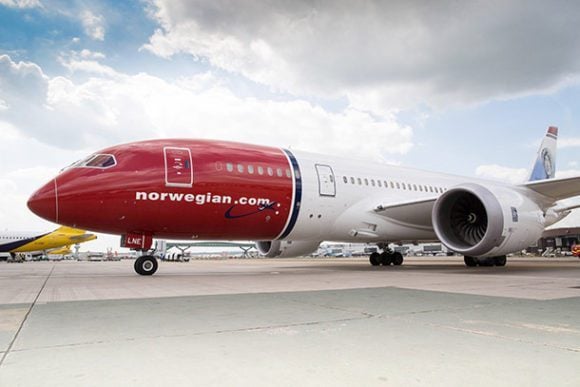IAG’s announcement that it will sell its 3.93% share in Norwegian Air Shuttle (ASA) in due course marks the end of a nine-month attempt by the airline group to get a grip on the low-cost airline from Northern Europe. Who has most the gain from this?
At first impression: Norwegian. It successfully fought off a buy-in attempt that was first made public on April 12 last year, when IAG confirmed it had purchased a 4.61% share and was planning a full offer later on. From the start, Norwegian’s board and shareholders had none of it and stuck to their own plans. That’s what they repeated on January 24 on Twitter in reaction to the IAG announcement: “Norwegian’s plans and strategy remain unchanged. The company’s goal is to continue building a sustainable business to the benefit of its customers, employees and shareholders,” said Chairman of the Norwegian Board, Bjorn Kise.
So IAG seems the ‘loser’ here, having aspired to bring a major competitor under its reign by buying Norwegian rather than having to fight it. That those aspirations were doomed, became evident to CEO Willie Walsh very soon: discussions he hoped to start after his first offer never happened and during the HY1 results conference call last August Walsh said that if nothing was to change, IAG wouldn’t hold onto the Norwegian shares longer than necessary. That moment came Thursday.
Norwegian and its shareholders don’t want to lose control to outside parties, sticking to its ‘goal’ and ‘sustainable business model’. That they forgo on additional capital is a risk they accept, realizing at the same time that funding is urgently needed. Having expanded rapidly over the last three years and with many aircraft on order, Norwegian is under a huge burden of debts and obligations (52.3bln kroner by July last year), which affects its cash position. Norwegian urgently needs funding to meet its obligations, like paying bonds due next December. Bloomberg quoted an analyst, saying the airline group needs at least 1.6bln kroner ($200m) if it wants to meet its obligations. Resources coming from IAG would have been most helpful.
At a January 8 seminar, Norwegian told investors its Focus2019 program targets a minimum cost reduction this year of 2bln kroner ($230m) excluding fuel costs as part of its strategy to get back to sustainable profitability in 2019. Part of this strategy too until 2022 is to maintain short-haul routes in Europe, grow medium/long-haul routes and explore options for growth elsewhere.
Yet a week later, Norwegian announced it will cut its 737 network and close bases at Palma de Mallorca, Gran Canaria, Tenerife and Rome in Europe as well as Stewart and Providence in the US. All “necessary adjustments in its route portfolio to improve its sustainability and financial performance amid this highly competitive environment”, according to Norwegian, but undeniably measures that will weaken its sustainable business model short- and long-term.
We will hear more details about Norwegian’s financial position at its Q4 2018 presentation on February 14.
Views: 0




